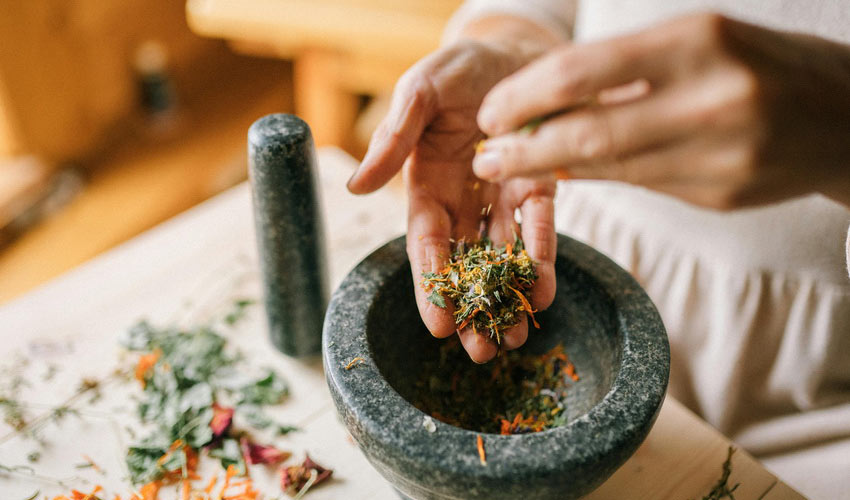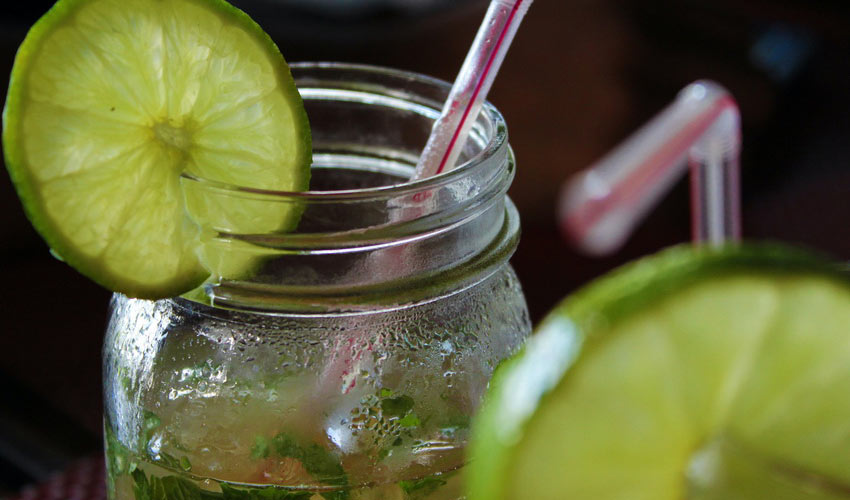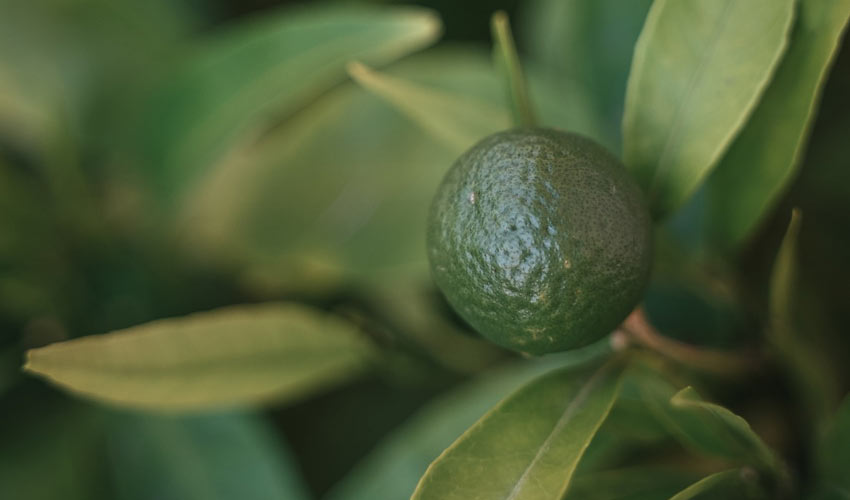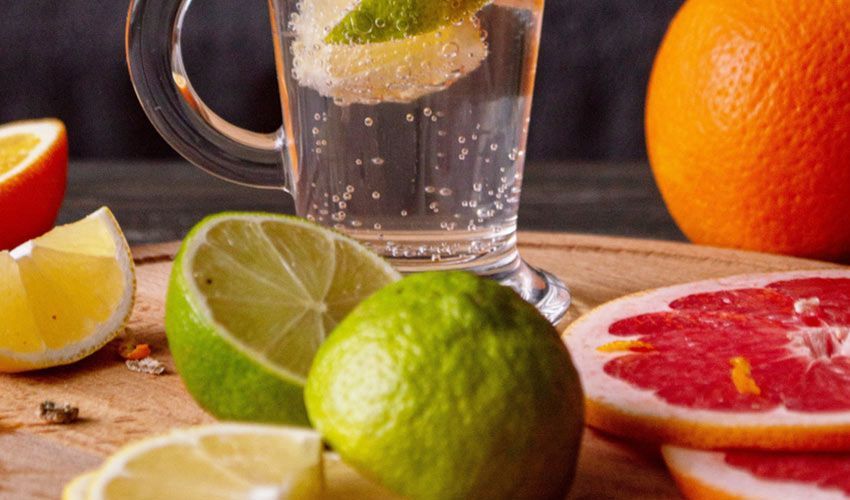Bergamot: A Multi-Faceted Miracle Cure
Alright, folks, get ready for some plant power! This article is all about how chemicals found in plants are like the superheroes of medicine. They're the ones that lay the groundwork for all those life-saving drugs we rely on. Let's dive into the world of medicine and take a special trip to Italy, where a bunch of smart scientists did a study on this very topic. Now, don't worry, I know scientific stuff can put you to sleep faster than a lullaby. That's why I'm here to break it down in a fun and witty way! So, these plant chemicals, also known as compounds, have been doing some incredible work in the field of oncology. One particular compound called paclitaxel, along with a bunch of other plant substances, have been like role models for designing powerful synthetic drugs. It's like they're giving these lab-made super-drugs a high-five and saying, "Hey, we got your back, buddy!" Now, these plant-based medicines are part of what we call traditional medicine (TM). The World Health Organization (WHO) says TM is all about the knowledge, skills, and practices based on the ideas, beliefs, and experiences of indigenous cultures. It's their way of staying healthy and kicking mental and physical illness to the curb.
But here's the cool part: TM isn't just limited to one set of therapies or practices. It's a world of its own, full of diverse treatments and traditions depending on where you are. We're talking about drugs made from herbs, animal goodies, and even minerals! It's like a natural pharmacy out there, my friends. So, next time you pop a pill or slather on some ointment to fight off that pesky cold, remember that plants are our secret allies. They're the heroes behind the scenes, giving scientists the inspiration and tools they need to save lives. Isn't nature just the coolest? In Italy, Traditional Medicine (TM) has often been referred to as folk medicine, but its popularity took a nosedive in the 1940s when the chemical and pharmaceutical industry came on the scene. However, in the past couple of decades, people both in Italy and across the globe have developed a renewed interest in TM, especially when it comes to medicinal plants.

For instance, folks have concocted a plethora of remedies using plants to combat infectious skin diseases like anthrax, boils, erysipelas, impetigo, and pustules. They discovered that slapping fresh plant material on the affected area actually has antimicrobial powers. Talk about green skincare! And get this – even plants that were traditionally used for non-medicinal purposes are getting attention. Take the Peristrophe bivalvis, for example. People used to use its leaf extract as a harmless food dye. But now scientists are investigating its biological and pharmacological properties. Who would have thought a food dye could have hidden talents?
But it doesn't stop there. Plants not only offer medicinal benefits but also provide compounds to influence metabolic processes. They're like sidekicks to pharmacological substances. However, integrating them as food supplements sometimes requires a bit of processing creating formulations that actually have an impact inside our bodies. One prime example is the fancy Bergamot, a citrus fruit that grows along the narrow coastal strip in Calabria, Southern Italy. This little fella packs a punch with its various biologically active components. To enhance its effectiveness, scientists have produced a range of Bergamot formulations loaded with polyphenols to improve digestion. They're essentially supercharging the Bergamot. These clever researchers are now mixing it up even further. They're blending Bergamot extracts with other funky foods like artichoke, wild cardoon, or olive. And if that's not enough, they're tossing in pure compounds like vitamin K2, flavonoids, and pectins to create a party of positive interactions. This culinary chemistry potentially opens the door to treating a wider range of diseases and risk conditions. It's like a buffet of health options!
In conclusion, TM is experiencing a comeback, driven by the power of plants. From skin miracles to metabolic magic, there's a whole world of botanical possibilities waiting to be explored. So let's raise our glasses – or maybe a nice cup of herbal tea – to the exciting journey ahead!

History of Bergamot
Bergamot, the sensitive little diva of the citrus world, is a rare find, only thriving in a tiny coastal sliver between Reggio Calabria and Locri at the tip of Italy. Talk about exclusivity! This province just so happens to be the holy grail for Bergamot, where its essence can reach peak performance like nowhere else. They've got the secret formula, folks. Let's dive into the origins of this mysterious fruit. Some say the name "Bergamot" stems from the Turkish term "beg-a-mudi," meaning "Pears of the Prince." I guess it kind of does look like a fancy pear when you squint your eyes and turn your head sideways. A painting from 1715 even showcased this resemblance by an artist named B. Bimbi. Another theory suggests that Bergamo, a city in Italy, deserves the credit for introducing Bergamot oil to the world. But who really knows? This fruit likes to keep us guessing. Speaking of guessing, the exact birthplace of Bergamot is still up for debate. Some legends whisper that it sprung from the Canary Islands, while others tell tales of China, Greece, or the Spanish city of Berga, where it supposedly hitched a ride to Southern Italy. Wow, this fruit gets around!
Enough with the history lesson! Let's talk about Bergamot's claim to fame - its irresistible fragrance. Back in the day, perfume makers were all over it, creating fancy schmancy "Bergamot water" and "cologne water," trying to capture the essence of this enchanting citrus. But Bergamot didn't stop there. Oh no, it also made a splash in the culinary and pharmaceutical worlds. Who knew this little fruit could do so much? It began flavouring all sorts of treats and adding a delightful scent to ointments, medicines, toothpaste, hair oils, shampoos and even cosmetics. Talk about versatility!
Healing Powers of Bergamot
As Bergamot made its way to Europe, people also started realising its healing powers. Doctors and chemists were buzzing with excitement. One German pharmacy had Bergamot oil listed as a medicinal marvel in 1688. Then, an Italian doctor named Francesco Calabrò discovered the anti-infectious and healing properties of Bergamot in the early 1800s. This fruit was on a roll! For centuries, it had been used in folk medicine to treat wounds, burns, varicose veins, and even toothaches. It was the go-to antipyretic and anti-inflammatory agent. It was even dropped into tea to battle malaria. Bergamot was a cure-all wonder! Fast forward to the 1930s, a surgeon named Antonino Spinelli dropped some groundbreaking knowledge. He found that Bergamot had some serious germ-killing powers, making it a potential superstar in the surgical world. Move over, traditional antiseptics, there's a new sheriff in town!
More recently, in Reggio Calabria, Bergamot has become the hot ticket item for natural cholesterol and triglyceride control. Move aside, statins, there's a citrus superhero in town! So, there you have it, folks. Bergamot is the finicky fruit that does it all. From tantalising perfumes to wound-healing miracles, this little gem has captured our hearts - and our taste buds. Long live the Bergamot! The beneficial properties of this fruit, which have been observed and applied in folk medicine for several centuries, have attracted renewed attention in recent years. Over the past decade, Bergamot has been the subject of substantial modern scientific research and numerous in-depth studies. In this review, we will summarise the major findings from these studies on the anti-proliferative and anti-inflammatory effects of Bergamot and discuss the implications for current medicine.

Bergamot’s Anti-Proliferative & Pro-Apoptotic Effects
Bergamot, you sly little citrus, how you've managed to infiltrate and manipulate the very fabric of our biological pathways! In vitro and in vivo investigations have left no stone unturned, revealing that this sneaky fruit, in all its forms - extract, juice, essential oil, and polyphenolic fraction - has the power to shake things up in our cells, particularly when it comes to fighting cancer.
You see, Bergamot has a knack for triggering a form of programmed cell death called apoptosis. Think of it as the final curtain call for those cruel cancer cells. Now, apoptosis has two main pathways: the extrinsic and the intrinsic. The extrinsic pathway starts with cell surface death receptors being stimulated by their ligands, like a dance between life and death. Adaptor molecules step in, followed by the activation of a certain caspase-8. On the other hand, the intrinsic pathway is like an intricate balance between anti- and pro-apoptotic members of the B-cell lymphoma 2 (Bcl-2) family. It all culminates in the release of cytochrome c from mitochondria and the activation of our hero caspase-9. In the end, both pathways merge into the activation of caspase-3, the ultimate executioner of apoptosis. Now, let's dive into the juicy details of Bergamot's effect on apoptosis and proliferation. Countless studies have put this citrus wonder to the test, using various formulations and cancer cell lines. For instance, Bergamot juice extract (BJE) has been shown to put the brakes on colon cancer cells' growth rates and even induce apoptosis. How? Well, it seems like Bergamot plays dirty with the MAPK pathway, throwing it off balance, while also meddling with those mean apoptotic proteins.
But colon cancer is just the beginning! Bergamot also shows potential anti-proliferative powers when it comes to neuroblastoma cells. What is the secret weapon here? Flavonoids! These little compounds found in Bergamot go all ninja on the cancer cells' adhesive capacity. They mess with actin filaments, disrupt the active form of focal adhesion kinase (FAK), and even mess with its association to neural cell adhesion molecule (NCAM). In simpler terms, Bergamot makes it harder for those cancer cells to stick around. Hepatocellular carcinoma (HepG2) cells, watch out! Bergamot's got a bone to pick with you. It not only shows anti-proliferative and pro-apoptotic effects in these cells, but it also inhibits their growth and adhesion. And let's not forget about our old friend, the neuroblastoma cell lines. Once again, Bergamot proves its worth by putting a stop to their growth and adhesion. It's like a one-two punch.
So, what about the big picture? Does Bergamot's magic work outside the controlled confines of the laboratory? Well, it turns out that Bergamot Extract can actually reduce lung metastases in an in vivo mouse xenograft model. Those inhibitory effects observed in vitro seem to translate to a real-life scenario. Bergamot really knows how to impress. So, there you have it. Bergamot, the fruity superhero fighting cancer cells one apoptosis at a time. Extracts, juices, essential oils, and polyphenolic fractions all join forces to alter biological pathways, giving cancer cells a run for their money. It's like a citrus-flavoured revolution in the realm of cancer research, and Bergamot is leading the charge.
Novel formulations of bergamot have been put to the test, and boy, do they pack a punch against cancer! One study found that when Bergamot essential oil was incorporated into nanoparticles, its ability to kill cancer cells skyrocketed. It left regular old free oil in the dust, showing potential as a therapeutic option. Another study discovered that a dynamic duo of Bergamot-derived flavonoids, brutieridin and melitidin (let's call them BMF), were no joke when it came to fighting breast cancer. These flavonoids inhibit mevalonate metabolism and HMGR, reducing vicious aldehyde dehydrogenase activity and mammosphere formation. Not only that, but they also slammed the door shut on stem cell-associated signaling pathways, like STAT1/3, Notch, and WNT/beta-catenin, effectively shutting down Rho-GDI signaling. Talk about multitasking!
p>Oh, but we’re not done yet! Turns out, high levels of HMGR mRNA in breast cancer patients were linked to a not-so-great prognosis. But fear not, because BMF could potentially be a game-changer in personalised therapy. Imagine a tag-team approach that targets the bad stuff while leaving healthy cells unscathed. Moving on to our furry friends, a study conducted on tumour-bearing rats showed some major progress. Bergamot juice extract sent inflammation-related genes packing, including the infamous cyclooxygenase-2 (COX-2). It also caused increased apoptosis (RIP cancer cells), boosted p53 (a tumour suppressor), and lowered the survivin and p21 genes in Bergamot-treated animals. In other words, Bergamot juice extract balled up its fists and fought cancer with all its might. Now, before you get too excited, remember that these findings need to be confirmed in human studies. But if everything checks out, Bergamot could be a valuable weapon not just in preventing colorectal cancer for high-risk patients, but also in revolutionising cancer diagnosis and management across the board. The possibilities are truly mind-boggling! So, ladies and gentlemen, buckle up! Bergamot and its various formulations are showing off their killer instincts in vitro and in vivo models of different cancer types. This citrus superhero is flexing its pro-apoptotic and anti-proliferative muscles, ready to take on the daunting task of developing anticancer therapies. Stay tuned for more juicy discoveries!

Bergamot’s Anti-Inflammatory & Antioxidant Effects
In the past ten years, there has been this resurgence of interest in all things natural, including potential sources of drugs and therapies. And guess what? This includes investigating the badass anti-inflammatory powers of Bergamot Essential Oil (BEO). Yes, you heard it right - this oil might just be the superhero we've been waiting for. Scientists got all lab-coaty and decided to test BEO's anti-inflammatory abilities by inducing inflammation in rats. They used this sneaky trick called carrageenan-induced paw oedema (try saying that five times fast) to mimic inflammation. But, because furocoumarins, a component of BEO, can be a bit toxic, they used a furocoumarin-free fraction called BEO-FF. Smart thinking, right? So, they pre-treated these poor rats with BEO-FF, and boy, did it do wonders! The levels of inflammatory baddies like IL-1β, IL-6, and tumour necrosis factor (TNF)-α were significantly reduced in the paws of these rats. Not only that, but the nitrite/nitrate and prostaglandin E2 (PGE2) content in their paw exudates also took a drastic dip. Talk about putting out the fire!
But hey, there's more. They didn't just test BEO-FF on rats with paw inflammation; they also gave a different form of BEO, called Bergamot Juice Extract (BJE), to some other rats with a mouthful of a condition called experimental periodontitis induced by lipopolysaccharide (LPS) injections. It's like they were playing mad scientist bingo with these names. Anyway, after 14 days of munching on BJE, these rats experienced a significant reduction in all the typical signs of inflammation in their gums. It's like BJE whispered some magic words that made the inflammation disappear. The production of nasty molecules like nuclear factor kappa-light-chain-enhancer of activated B cells (NF-κB), myeloperoxidase, and adhesion molecules took a hit. And what was the cherry on top? BJE also messed around with some genes, down-regulating BCL-2-associated X protein (BAX) and up-regulating B cell lymphoma-2 (BCL-2) expression. Science lingo translation: BJE was doing a number on inflammation and helping the gums heal. Now here's the bottom line: these research geniuses believe that because BEO and BJE work in different ways, they could potentially enhance the effects of other drugs, like NSAIDs, without all those annoying side effects. Think of it as a dynamic duo of anti-inflammatory goodness. So, there you have it. Bergamot Essential Oil, it's not just a pretty scent. It's a potential game-changer in the world of anti-inflammatory therapy. Take that, inflammation!
Parkinson's disease, known as PD for short, is a real party pooper. But fear not, because there's mounting evidence pointing to the culprits behind this stinky disease: oxidative stress and apoptosis. Think of them as the troublemakers crashing the party. Now, enter Bergamot, our hero in this tale. This study wanted to see if Bergamot Juice (BJ) could swoop in and protect neuroblastoma cells from meeting their untimely demise at the hands of 6-hydroxydopamine (sounds lethal) or hydrogen peroxide (equally lethal). They put those poor cells through hell, and you know what? BJ came to the rescue! It significantly reduced cell death, like a super-powered shield protecting those vulnerable neurons. How? By lowering intracellular ROS and NO, those sneaky little troublemakers responsible for wreaking havoc. But wait, there's more! BJ didn't stop there. It also tackled mitochondrial dysfunction, silenced CASP3's evil plans, brought balance to the pro- and anti-apoptotic proteins, shut down the MAPK gang, and even thwarted NF-κB's attempts at nuclear takeover. Talk about a multitasking hero! Based on these results, Bergamot proves it's not just a pretty face with its antioxidant superpowers. It could actually be a game-changer in managing neurodegenerative diseases. Take that, PD!
And there's an ally joining the party: Bergapten, the newest member of the phytochemical formulation gang. This tough guy from various Citrus species (including Bergamot) knows how to fight inflammation. It shuts down pro-inflammatory cytokines like TNF-α and interleukins, calms the storm of prostaglandins, and even cleans up the mess left by neutrophils and macrophages. And it knows how to handle oxidative stress like a boss by putting ROS in their place. But don't be fooled, Bergapten isn't a lone wolf. It proved its worth in a rat acetic acid-colitis model, soothing those inflamed colons and saying "talk to the hand" to those horrible mast cells causing trouble. You go, Bergapten! There's another superhero in the Citrus family: CMSPB80-1, the heteropolysaccharide derived from Citrus medica var. sarcodactylis. This compound is all about strength and protection, boasting some serious antioxidant power. It boosts the phagocytosis of macrophages (impressive, right?) and gets those mouse splenocytes multiplying like crazy. Who knew you could find such an immunomodulatory agent in the fruity world?
Now let's talk about BPF, the heart defender. It stepped up to the plate when the common antineoplastic drug doxorubicin (DOXO) was causing chaos. With BPF by its side, DOXO-induced cardiac damage was no match. Autophagy came to the rescue, reducing apoptotic heart cells and reactive hypertrophy. Simply put, BPF flipped the script on DOXO and made sure those resident endogenous c-kitpos cardiac stem cells survived to tell the tale. But hold up, it's not over yet! The party's not complete without BJE, the extract that can light up the AMPK/SIRT1 axis. BJE can activate the transcription factor NAD-dependent sirtuin-1 deacetylase (SIRT1), which is essential for battling degenerative pathologies like atherosclerosis, diabetes, and Alzheimer's disease. BJE shows that it's not just an ordinary extract. It's here to shake things up and fight for our wellbeing.
So, there you have it folks, the Bergamot party extravaganza. It's clear that Bergamot and its squad of derivatives are knocking on the door of degenerative diseases, ready to avert disaster and bring vitality back into our lives. Let's raise a glass of Bergamot juice to that! Cheers to a brighter future!
My Final Thoughts
Bergamot is no longer just a flavouring agent and a pretty scent for your deodorants and perfumes. Nope, this citrusy wonder has now stepped up its game and is showing off some serious potential in the world of medicine and health. Scientific studies have found that Bergamot formulations can actually put a stop to cancer cells' wild party in the lab. Yep, it messes with their cell cycle and tells them to take a break. So, now we're thinking, why not use Bergamot or its derivatives as anticancer superheroes in therapy? Sounds pretty promising, right? But hold on, these studies are just the tip of the berga-mountain. We still have a lot to learn about how Bergamot works its magic. We need to dig into those molecular mechanisms and figure out all the nitty-gritty details. And let's not forget about the dosage, administration method, and even the type of Bergamot formulation. This stuff matters, folks.
And guess what? Researchers have been on a roll with all these experiments. They're whipping up all sorts of new Bergamot concoctions. They're throwing in nutraceuticals, trying out different derivatives. Basically, they're bartenders creating some mind-blowing cocktails. These new formulations can change how the Bergamot goodness gets absorbed, which, in turn, changes the final effects. So, cheers to innovation! The more we explore and confirm the awesome powers of Bergamot, the more industries want a taste of it. It's become a hot commodity, and Calabrian farmers are sitting up and taking notice. They realise they've hit the jackpot with their Bergamot production, which pretty much dominates the world market. Way to go, guys! With all this attention from scientists and farmers, Bergamot's therapeutic profile just keeps getting juicier. It's not just a pretty fruit anymore – it's becoming a potential game-changer for human health. Our perception of Bergamot has definitely evolved beyond its use in traditions. It's now a complex superhero that has us all excited for what the future holds. Bottom line: Bergamot is the new cool kid on the block! You can experience this fruit's health benefits by ordering Ancient Purity Bergamot Orange Powder Today!
''Bergamot is a mild diuretic and has anti-inflammatory, which makes it helpful in the treatment of varicose veins.'' - Author: Nathaniel Wake
References:
- Atherogenic Index Reduction and Weight Loss in Metabolic Syndrome Patients Treated with A Novel Pectin-Enriched Formulation of Bergamot Polyphenols
- Anti-oxidant effect of bergamot polyphenolic fraction counteracts doxorubicin-induced cardiomyopathy: Role of autophagy and c-kitposCD45negCD31neg cardiac stem cell activation
- Bergamot natural products eradicate cancer stem cells (CSCs) by targeting mevalonate, Rho-GDI-signalling and mitochondrial metabolism
- Randomized Clinical Trial: Bergamot Citrus and Wild Cardoon Reduce Liver Steatosis and Body Weight in Non-diabetic Individuals Aged Over 50 Years
- Bergamot juice extract inhibits proliferation by inducing apoptosis in human colon cancer cells
- The link between the AMPK/SIRT1 axis and a flavonoid-rich extract of Citrus bergamia juice: A cell-free, in silico, and in vitro study






















